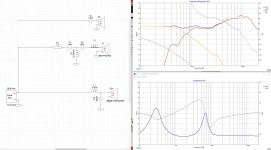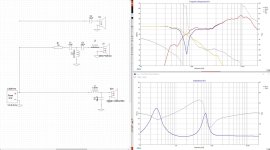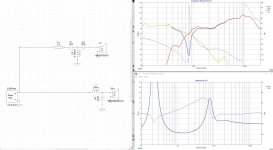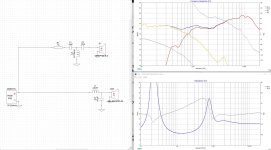Are these adjusted to take into account woofer response?:
Says 90bd - 96db - 102 dB , but is this throughout the frequency range or at a specific point?
https://www.dibirama.altervista.org...k-26w-8534g00-woofer-10-8-ohm-150-wmax-2.html
Some other tests:
https://hificompass.com/en/speakers/measurements?page=2
http://zaphaudio.com/8test/
This guy I can understand; he has relative measurements:
https://feleppa.com.au/speakermeasmid.html
Having trouble figuring out which driver(s) has the lowest bass distortion.
Trying to "eyeball it", but doesn't seem that easy. And I don't know where the SPL is referenced from or if they might be relative?
Says 90bd - 96db - 102 dB , but is this throughout the frequency range or at a specific point?
https://www.dibirama.altervista.org...k-26w-8534g00-woofer-10-8-ohm-150-wmax-2.html
Some other tests:
https://hificompass.com/en/speakers/measurements?page=2
http://zaphaudio.com/8test/
This guy I can understand; he has relative measurements:
https://feleppa.com.au/speakermeasmid.html
Having trouble figuring out which driver(s) has the lowest bass distortion.
Trying to "eyeball it", but doesn't seem that easy. And I don't know where the SPL is referenced from or if they might be relative?
Last edited:
Yes to your first question.
Your second question is answered if you are reading the harmonic distortion plots. You're looking at the total harmonic distortion responses vs. frequency, on-axis, as a function of the on-axis fundamental at three different SPLs. Most of those THD numbers will be second harmonic, which is typically not very audible, however, third harmonic and higher harmonics are typically audible. The higher the harmonic, the more audible. Unfortunately, there is nothing there to show you the relative harmonics.
The answer to your third question: probably 1 m on axis from the mounting surface of the woofer.
The real issue is how much "intermodulation" (a.k.a., modulation) distortion, not the harmonic distortion. But all that harmonic distortion turns into modulation distortion anyway.
If you want to eliminate the woofer modulation distortion, put an appropriately sized horn in front of the woofer--and the modulation distortion will decrease by almost 25 dB at the same on-axis SPL.
Chris
Your second question is answered if you are reading the harmonic distortion plots. You're looking at the total harmonic distortion responses vs. frequency, on-axis, as a function of the on-axis fundamental at three different SPLs. Most of those THD numbers will be second harmonic, which is typically not very audible, however, third harmonic and higher harmonics are typically audible. The higher the harmonic, the more audible. Unfortunately, there is nothing there to show you the relative harmonics.
The answer to your third question: probably 1 m on axis from the mounting surface of the woofer.
The real issue is how much "intermodulation" (a.k.a., modulation) distortion, not the harmonic distortion. But all that harmonic distortion turns into modulation distortion anyway.
If you want to eliminate the woofer modulation distortion, put an appropriately sized horn in front of the woofer--and the modulation distortion will decrease by almost 25 dB at the same on-axis SPL.
Chris
Last edited:
I don't think I asked my first question clearly.
So these plots:
https://www.dibirama.altervista.org...k-26w-8534g00-woofer-10-8-ohm-150-wmax-2.html
They are relative like this link:?
https://feleppa.com.au/speakermeasmid.html
I don't think they are relative, but I could be wrong.
Seems like they are pinned from some sort of "fundamental" frequency, or something I'm not super interested in.
I'm not building a horn.
Don't understand woofer distortion measurements period.
Almost all woofers sound accessible until they get into lower frequencies.
The Seas L16 looks great.
Trying to decide between SB23CAC-04 or SEAS 22REX
Maybe other design.
How's a Fostex have the same bass distortion at 90db 20Hz as a SEAS L26?
https://www.dibirama.altervista.org...fe208e-sigma-full-range-8-8-ohm-120-wmax.html
https://www.dibirama.altervista.org...k-26w-8534g00-woofer-10-8-ohm-150-wmax-2.html
https://www.dibirama.altervista.org/home-page/woofer/319-seas-l26rfx-p-woofer-10-8-ohm-300-wmax.html
So these plots:
https://www.dibirama.altervista.org...k-26w-8534g00-woofer-10-8-ohm-150-wmax-2.html
They are relative like this link:?
https://feleppa.com.au/speakermeasmid.html
I don't think they are relative, but I could be wrong.
Seems like they are pinned from some sort of "fundamental" frequency, or something I'm not super interested in.
I'm not building a horn.
Don't understand woofer distortion measurements period.
Almost all woofers sound accessible until they get into lower frequencies.
The Seas L16 looks great.
Trying to decide between SB23CAC-04 or SEAS 22REX
Maybe other design.
How's a Fostex have the same bass distortion at 90db 20Hz as a SEAS L26?
https://www.dibirama.altervista.org...fe208e-sigma-full-range-8-8-ohm-120-wmax.html
https://www.dibirama.altervista.org...k-26w-8534g00-woofer-10-8-ohm-150-wmax-2.html
https://www.dibirama.altervista.org/home-page/woofer/319-seas-l26rfx-p-woofer-10-8-ohm-300-wmax.html
okay dokie, figured it out
They are not adjusted:
https://www.dibirama.altervista.org...-neo3pdrw-tweeter-a-nastro-4-ohm-50-wmax.html
No way B&G tweeter gets lower in distortion as it approaches 500 Hz playing at 90-96-102 dB.
It's pinned at some "fundamental" frequency.
Although I was shocked recently at how much better (more realistic) an open air GRS https://www.parts-express.com/GRS-PT6816-8-8-Planar-Slim-Tweeter-8-Ohm-272-128 sounded than a Dayton RS52
Crossed over at 300 Hz, there was no detectable distortion in the GRS and the Dayton sounded like a dome in a high Q enclosure, I think.
What do these measurements tell us?
All 8" woofers play well to about 1000 Hz give or take.
And where they all start to have high levels of distortion, in the bass, well we can't interpret those measurements, more or less.
This is why I love the internet and being an "audiophile".
They are not adjusted:
https://www.dibirama.altervista.org...-neo3pdrw-tweeter-a-nastro-4-ohm-50-wmax.html
No way B&G tweeter gets lower in distortion as it approaches 500 Hz playing at 90-96-102 dB.
It's pinned at some "fundamental" frequency.
Although I was shocked recently at how much better (more realistic) an open air GRS https://www.parts-express.com/GRS-PT6816-8-8-Planar-Slim-Tweeter-8-Ohm-272-128 sounded than a Dayton RS52
Crossed over at 300 Hz, there was no detectable distortion in the GRS and the Dayton sounded like a dome in a high Q enclosure, I think.
What do these measurements tell us?
All 8" woofers play well to about 1000 Hz give or take.
And where they all start to have high levels of distortion, in the bass, well we can't interpret those measurements, more or less.
This is why I love the internet and being an "audiophile".
- Spend a bunch of time looking at graphs that mean next to nothing.
- Building speakers that all sound pretty much okay above 100Hz.
- Where 90% of all the distortion is (and on top of that at a low SPL level), there really is no data and no one cares about that frequency region anyway.
- The the most realistic driver above 1000Hz measurements horribly.
Building speakers that all sound pretty much okay above 100Hz.
If you want exceptionally good sounding speakers, have you tried anything like these?
https://www.soundlabspeakers.com/majestic/
They do have their drawbacks (low sensitivity, high cost, large size, etc.), but used properly they can sound exceptionally good.
No, I'm building some.
It's funny the best 300hz and above driver I have is:
https://www.parts-express.com/GRS-PT6816-8-8-Planar-Slim-Tweeter-8-Ohm-272-128?quantity=1
I can't seem to filter out the 400 Hz bump/resonance in Xsim.
Doesn't seem to be a lot of content above 4 KHz.
http://zaphaudio.com/ZDT3.5.html
Has a crap ton of cross-over crap going on.
Lobing at 3500 Hz is very bad if you're 20 degrees between the tweeter, which sometimes I am.
Cross-over makes me want to not make it, although I already made it for a similar speaker.
I was thinking of doing GRS sideways in semi open baffle (top and bottom enclosed) with reflector behind it (sides open).
I can draw the reflector
Attached are some of my designs (with help from other designs of course).
It's funny the best 300hz and above driver I have is:
https://www.parts-express.com/GRS-PT6816-8-8-Planar-Slim-Tweeter-8-Ohm-272-128?quantity=1
I can't seem to filter out the 400 Hz bump/resonance in Xsim.
Doesn't seem to be a lot of content above 4 KHz.
http://zaphaudio.com/ZDT3.5.html
Has a crap ton of cross-over crap going on.
Lobing at 3500 Hz is very bad if you're 20 degrees between the tweeter, which sometimes I am.
Cross-over makes me want to not make it, although I already made it for a similar speaker.
I was thinking of doing GRS sideways in semi open baffle (top and bottom enclosed) with reflector behind it (sides open).
I can draw the reflector

Attached are some of my designs (with help from other designs of course).
Attachments
-
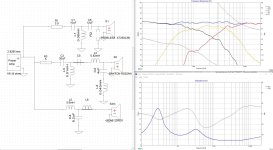 Screen-2023-12-18_16-27-33.jpg313.2 KB · Views: 60
Screen-2023-12-18_16-27-33.jpg313.2 KB · Views: 60 -
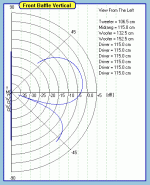 ZDT3.5-polar-3500hz.gif10.1 KB · Views: 58
ZDT3.5-polar-3500hz.gif10.1 KB · Views: 58 -
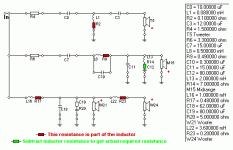 ZDT3.5-crossover.gif7.4 KB · Views: 54
ZDT3.5-crossover.gif7.4 KB · Views: 54 -
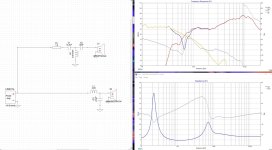 Screen-2023-12-18_17-14-14.jpg342.8 KB · Views: 58
Screen-2023-12-18_17-14-14.jpg342.8 KB · Views: 58 -
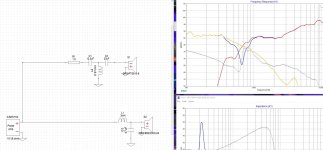 Screen-2023-12-18_17-14-05.jpg286.8 KB · Views: 59
Screen-2023-12-18_17-14-05.jpg286.8 KB · Views: 59 -
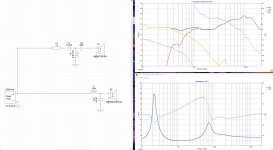 Screen-2023-12-18_17-13-35.jpg342.3 KB · Views: 50
Screen-2023-12-18_17-13-35.jpg342.3 KB · Views: 50 -
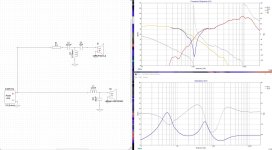 Screen-2023-12-18_16-54-55.jpg345.3 KB · Views: 54
Screen-2023-12-18_16-54-55.jpg345.3 KB · Views: 54 -
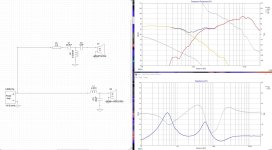 Screen-2023-12-18_16-54-43.jpg344.7 KB · Views: 53
Screen-2023-12-18_16-54-43.jpg344.7 KB · Views: 53 -
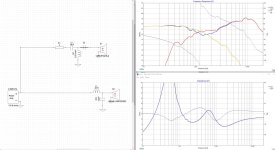 Screen-2023-12-18_16-35-01.jpg337.8 KB · Views: 57
Screen-2023-12-18_16-35-01.jpg337.8 KB · Views: 57 -
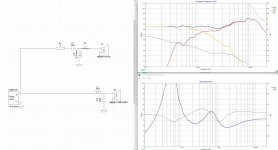 Screen-2023-12-18_16-34-51.jpg338.6 KB · Views: 56
Screen-2023-12-18_16-34-51.jpg338.6 KB · Views: 56 -
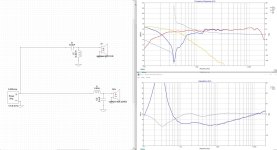 Screen-2023-12-18_16-33-39.jpg336.6 KB · Views: 52
Screen-2023-12-18_16-33-39.jpg336.6 KB · Views: 52 -
 Screen-2023-12-18_16-33-24.jpg339 KB · Views: 55
Screen-2023-12-18_16-33-24.jpg339 KB · Views: 55 -
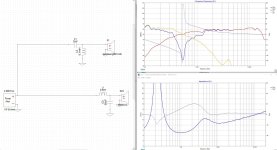 Screen-2023-12-18_16-32-41.jpg318 KB · Views: 58
Screen-2023-12-18_16-32-41.jpg318 KB · Views: 58 -
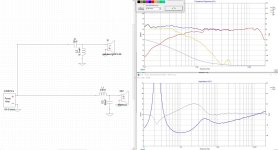 Screen-2023-12-18_16-32-28.jpg315.1 KB · Views: 60
Screen-2023-12-18_16-32-28.jpg315.1 KB · Views: 60 -
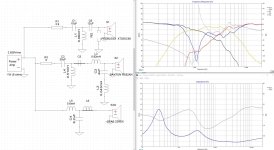 Screen-2023-12-18_16-31-24.jpg314.4 KB · Views: 54
Screen-2023-12-18_16-31-24.jpg314.4 KB · Views: 54
I don't recall the names of things 
https://www.diyaudioandvideo.com/Calculator/ParallelNotchFilter/
Those have huge caps, especially when I input Qms.
I don't believe in those filters, the series notch, specifically; but graphs look good except for the high frequencies, no?
Try to mount long ways on the top, 200 mm sideways across the top, looks cooler, and bird wings in the back with wool socks or similar material on the far thirds of the tweeters. 1950's or RAAL ribbon tweeter style.
I think that will help with horizonal dispersion and top octave rise.
I'm going to **** it up to some degree, but ribbons sound pretty good.
I was thinking of buying GRS neo3 and neo8, but then I have to wait to get them and I want to have an enclosed speaker, more or less (nothing on top).
Positive mod offset of 32 mm (1.25") of the woofer below it seems to help phase alignment if I'm using that term correctly.

Series Notch Filter?
Parallel Notch Filter?
https://www.diyaudioandvideo.com/Calculator/SeriesNotchFilter/https://www.diyaudioandvideo.com/Calculator/ParallelNotchFilter/
Those have huge caps, especially when I input Qms.
I don't believe in those filters, the series notch, specifically; but graphs look good except for the high frequencies, no?
Try to mount long ways on the top, 200 mm sideways across the top, looks cooler, and bird wings in the back with wool socks or similar material on the far thirds of the tweeters. 1950's or RAAL ribbon tweeter style.
I think that will help with horizonal dispersion and top octave rise.
I'm going to **** it up to some degree, but ribbons sound pretty good.
I was thinking of buying GRS neo3 and neo8, but then I have to wait to get them and I want to have an enclosed speaker, more or less (nothing on top).
Positive mod offset of 32 mm (1.25") of the woofer below it seems to help phase alignment if I'm using that term correctly.
Attachments
That's a poor comparison. The RS52 data sheet states it's usable frequency response starts at 500hz. And of course the manufacturer's claims are always a little exaggerated, so it's more like 700-900hz.Although I was shocked recently at how much better (more realistic) an open air GRS sounded than a Dayton RS52
Crossed over at 300 Hz, there was no detectable distortion in the GRS and the Dayton sounded like a dome in a high Q enclosure, I think.
My guess is you'd still prefer the GRS, but your comparison above isn't fair.
Yes, the GRS is pretty life-like.
I don't know if I should mount it horizontal or vertical.
I'm going to cover the thing with a sock or something similar; not sure which frequencies that affects.
My hat I wear in the winter tells me the high frequencies but not sure which.
but not sure which.
I guess it depends on the thickness and material.
Attached are some Mundorf FR graphs of their 200mm AMT drivers.
Seems like the GRS I have (depending on what the socks do) would benefit by being mounted horizontally, looks wise also, IMO.
Also the woofer would be closer.
If it's like the Mundorf, right between 5-15 degrees horizontally mounted it should be pretty flat.
Which is probably where I will be.
But the highs of the GRS aren't like a dome tweeter, they don't irritate me.
GRS highs, even on this 52 cm^2 Sd driver are better than or similar to Tymphany/Vifa/Peerless XT25 tweeters.
It's mostly the looks that bother me mounting it vertically.
Also my speakers are only 30" (76.2cm) tall and that will push the woofer into the middle of the speaker.
What you think? Mount it vertically with the socks on?
SB woofer looks so good, but not sure it sounds very fast.
Goes really low though.
I have a 1.5 cu ft. (42.5 liter) box with a 231x19mm port that's 686mm long in the back.
I only want to hear it a little at 20 Hz with the Seas, but with the SB I will hear it a lot I think.
Started out with different drivers when I built the box.
I don't know if I should mount it horizontal or vertical.
I'm going to cover the thing with a sock or something similar; not sure which frequencies that affects.
My hat I wear in the winter tells me the high frequencies
 but not sure which.
but not sure which.I guess it depends on the thickness and material.
Attached are some Mundorf FR graphs of their 200mm AMT drivers.
Seems like the GRS I have (depending on what the socks do) would benefit by being mounted horizontally, looks wise also, IMO.
Also the woofer would be closer.
If it's like the Mundorf, right between 5-15 degrees horizontally mounted it should be pretty flat.
Which is probably where I will be.
But the highs of the GRS aren't like a dome tweeter, they don't irritate me.
GRS highs, even on this 52 cm^2 Sd driver are better than or similar to Tymphany/Vifa/Peerless XT25 tweeters.
It's mostly the looks that bother me mounting it vertically.
Also my speakers are only 30" (76.2cm) tall and that will push the woofer into the middle of the speaker.
What you think? Mount it vertically with the socks on?
SB woofer looks so good, but not sure it sounds very fast.
Goes really low though.
I have a 1.5 cu ft. (42.5 liter) box with a 231x19mm port that's 686mm long in the back.
I only want to hear it a little at 20 Hz with the Seas, but with the SB I will hear it a lot I think.
Started out with different drivers when I built the box.
Attachments
-
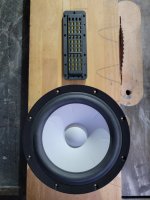 20231220_161707.jpg353.7 KB · Views: 52
20231220_161707.jpg353.7 KB · Views: 52 -
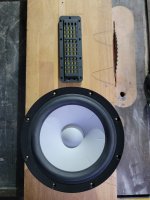 20231220_161705.jpg342.4 KB · Views: 43
20231220_161705.jpg342.4 KB · Views: 43 -
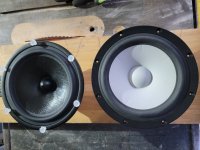 20231220_161638.jpg428.1 KB · Views: 59
20231220_161638.jpg428.1 KB · Views: 59 -
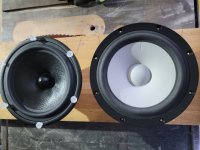 20231220_161632.jpg427.8 KB · Views: 48
20231220_161632.jpg427.8 KB · Views: 48 -
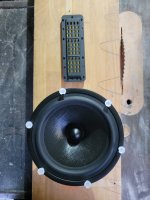 20231220_161527.jpg387.8 KB · Views: 50
20231220_161527.jpg387.8 KB · Views: 50 -
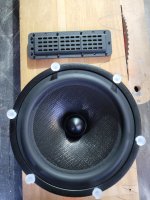 20231220_161520.jpg465.9 KB · Views: 54
20231220_161520.jpg465.9 KB · Views: 54 -
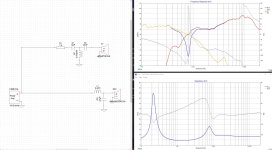 Screen-2023-12-20_17-29-53.jpg345.7 KB · Views: 54
Screen-2023-12-20_17-29-53.jpg345.7 KB · Views: 54 -
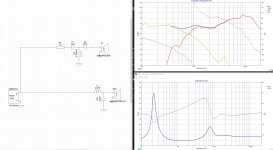 Screen-2023-12-20_17-29-44.jpg340.6 KB · Views: 56
Screen-2023-12-20_17-29-44.jpg340.6 KB · Views: 56 -
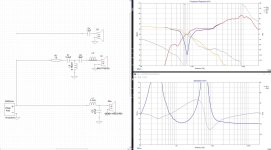 Screen-2023-12-20_17-28-55.jpg352.1 KB · Views: 59
Screen-2023-12-20_17-28-55.jpg352.1 KB · Views: 59 -
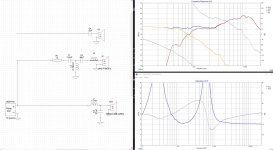 Screen-2023-12-20_17-28-45.jpg343.6 KB · Views: 56
Screen-2023-12-20_17-28-45.jpg343.6 KB · Views: 56 -
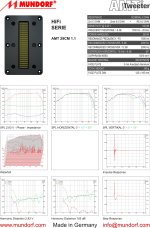 AMT29CM1.1.jpg372.4 KB · Views: 47
AMT29CM1.1.jpg372.4 KB · Views: 47 -
 272-128--grs-pt6816-8-spec-sheet.jpg429.7 KB · Views: 58
272-128--grs-pt6816-8-spec-sheet.jpg429.7 KB · Views: 58 -
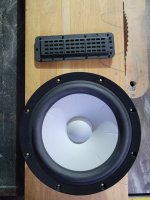 20231220_161713.jpg383.5 KB · Views: 51
20231220_161713.jpg383.5 KB · Views: 51
- Home
- Loudspeakers
- Multi-Way
- Understanding bass distortion -- how are these graphs to be interpreted at a fundamental level?
